Bachelor’s buttons are such cheerful flowers.
Also known as cornflowers, bright blue, pink, purple, or white Centaurea cyanus flowers are among the first to bloom in spring if you plant them right before the first frost.
A draw for pollinators, they have edible blooms, and flower for months after that spring start.
Since there’s so much to love about these members of the Asteraceae family, I always want more of them. I’ve found the most cost effective, low-labor way to reach that goal is to save the seeds at the end of the season.
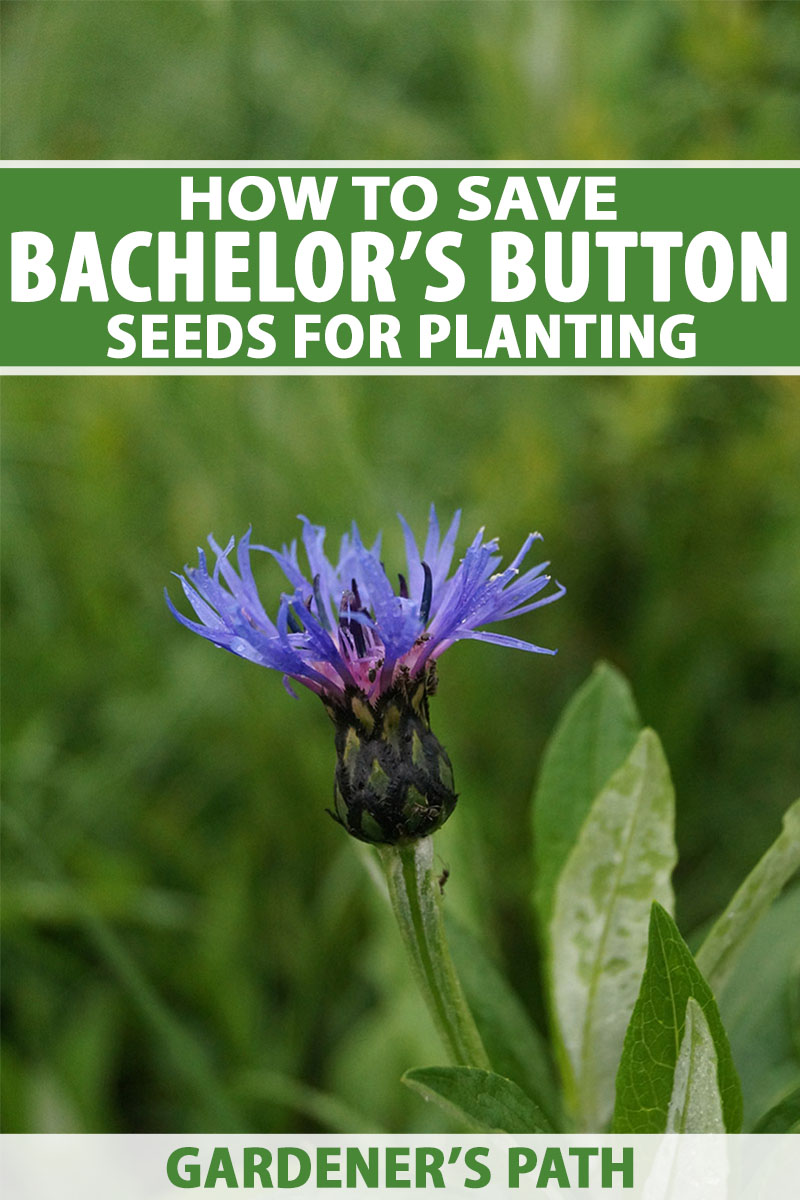
We link to vendors to help you find relevant products. If you buy from one of our links, we may earn a commission.
When I save mine, I have plenty to plant the next year, with more to spare to share with friends who might be looking for an easygoing flowering annual for their own gardens.
Coming up, I’m going to share something with you – the simplest way to save cornflower seeds. Here’s what I’ll cover:
How to Save Bachelor’s Button Seeds
Take Action When They Form Seeds
According to the wildlife experts at National Geographic, cornflowers are one of the top 10 flowering plants to attract songbirds.
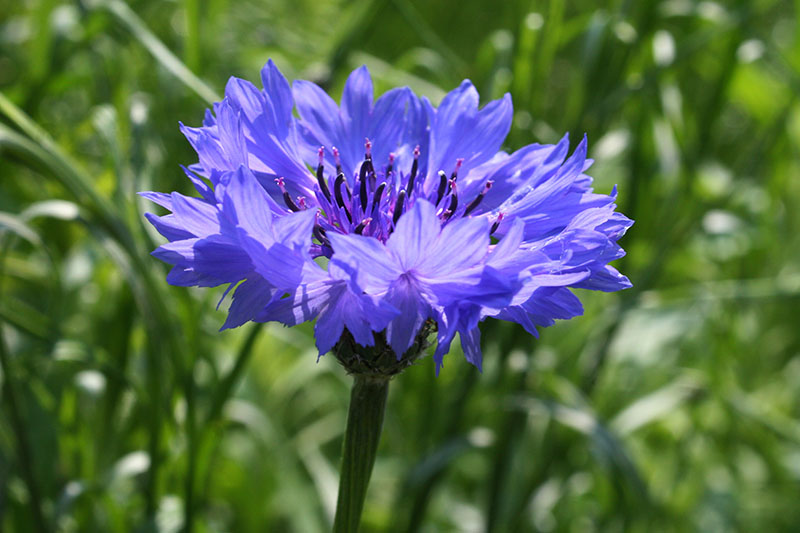
While that’s a great reason to plant them, it also means you might have to compete with the birds a bit for next year’s supply.
This year, I left plenty of blue bachelor’s button blooms on plants I grew in a tiered raised bed.
But when I went to collect the pods, I noticed that more than half of them had been stripped of their seeds.
The likely culprit? Probably the cardinals that I love so dearly.

They reside in my winter honeysuckle hedge and plunder my garden for water from baby tomatoes, and seeds from any manner of perennial and annual flowers.
Happily, cornflowers produce loads of blooms starting in late spring and going right up to the end of the summer.
So I’ll still have plenty of chances to get a stash of ‘Blue Boys’ to plant next year.
But to avoid allowing the birds to eat the whole lot, I do advise taking note when the flowers begin producing seeds.
Once the petals start to fade to brown from their original white, blue, or purple, the seeds start to form within the base of each flower.
If you’ve noticed that a lot of the dead blooms are now merely chaff and a dry stalks, you may want to cover a few of the remaining blooms that are forming seeds with a bit of bird netting until you get a chance to harvest.
Harvesting
While it’s a great idea to deadhead to keep these plants producing those bright blooms all season long, the dry, withered flowers are also the source of next year’s plantings.

So be sure to leave a few of the fallen soldiers on the stalks long enough that you’ll have something to collect.
To get the best of both worlds – providing sustenance for the birds while still being able to collect seeds for next year – focus on saving towards the end of the season.
Once you stop deadheading, the dry stalks will complete the majority of the process on their own. All you need to do is pluck the faded, completely dry flowers from the stalks.
If you prefer not to wait for the spent buds to dry to a crisp in the garden, you can cut the stalks when the flowers die and then hang them upside down in a cool, dry place.
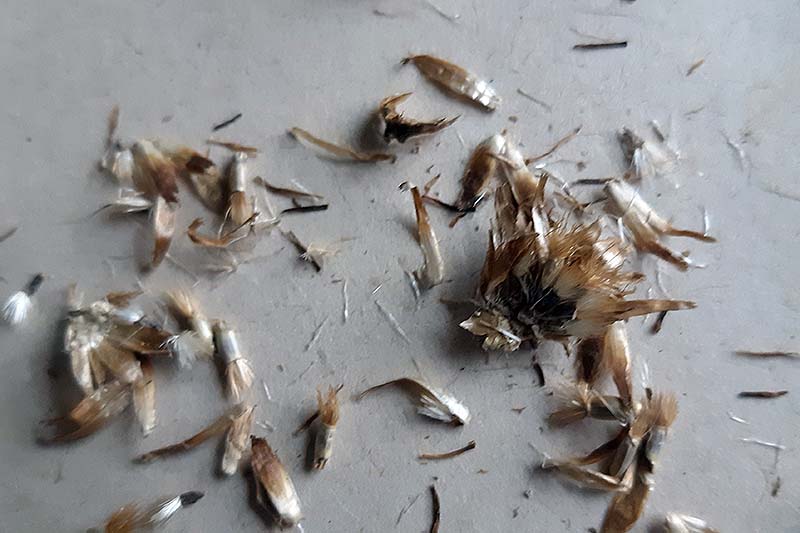
In either scenario, wait until the dead flowers are completely dry at the base of the flower heads.
Then set one in the palm of your hand and use a finger from your other hand to rub it open and release the seeds from the chaff.
They’ll still have little tufts of fluff on the top of each, and the bottoms will be black.
It’s okay if you get a bit of chaff in the mix. It will just go in the ground with the seeds, no harm done.
Storing
To be on the safe side, let those little tufts dry on a tray or screen in a cool, dry spot for a couple of days after separating them from the chaff.
I use the mantel in my living room, but any location without vermin, excessive heat, or humidity will be fine.
Then store them in an airtight container. Keep it away from humidity in a place with cool, but not cold, temperatures.
Now you’re all set for planting next year as soon as the ground can be worked in the spring, a week or two before your last expected frost.
Spread the Bachelor’s Button Cheer
It’s so nice to have extra seeds on hand, enough to share and maybe even plant in a few more areas than you usually would.
Check out our bachelor’s button growing guide to learn more about care and maintenance.
But if anything goes wrong with the process, like it did for me with those snacking cardinals, rest assured – there are plenty of reputable places to purchase seeds for these cheery blooms.

Wishing you all the best with your seed saving endeavors! Want more advice on any part of the process? Make sure to use the comments section below to add your experience or ask questions.
And for more information about growing flowers in your garden, check out these other guides for inspiration:
- When and How to Save Perennial Aster Seeds
- How to Grow and Care for Dreamy Delphiniums
- How to Grow and Care for Agapanthus
Photo by Rose Kennedy © Ask the Experts, LLC. ALL RIGHTS RESERVED. See our TOS for more details. Uncredited photos: Shutterstock.
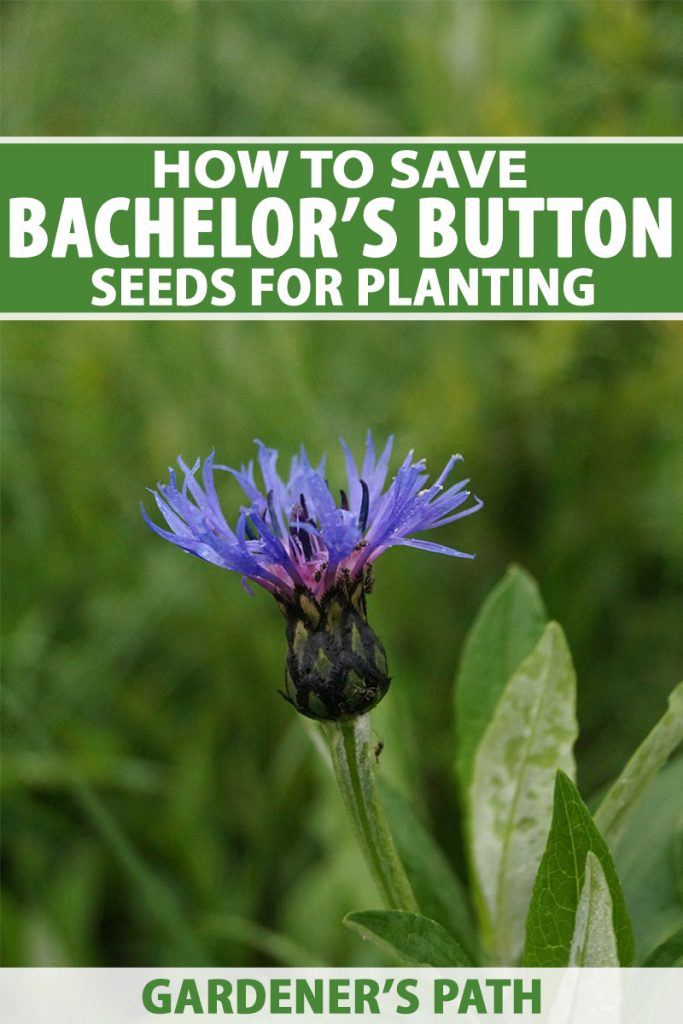
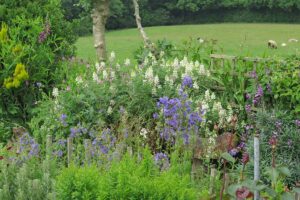

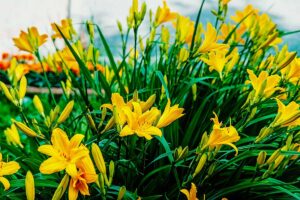
Thanks the tips. We have wild Bachelor’s buttons growing near us. I’ll see if I can help make more for the birds.
Hello Julia Houghton. That would be awesome! You know, if you don’t use herbicides or fungicides to grow bachelor’s buttons, the blooms are edible for you, too. Hope you make a go of it.
Thanks for the post- I just returned from my brother’s home and grabbed some seeds yesterday. Hope to get a nice bloom to attract cardinals next year!
Hello Mary. I have a barrel-sized bushy volunteer plant right where I had bachelor’s buttons last year, and it is attracting all sorts of pollinators. Hope your garden is growing well, too.
This article was exactly what I was looking for! I’m just starting to garden and wanted to harvest the seeds from my wildflowers for next year. Thank you!
You are so very welcome, Charlotte! Thanks for the shout-out.
Hi Rose, this is the first time planting Blue Boy,they came up in 4 days,such pretty bright blue color and silvery green foliage. Monarchs like them too. Thanks for tips on saving seeds for next year.
Hello Nan, that sounds absolutely lovely. Thanks for sharing, and good luck with those seeds!